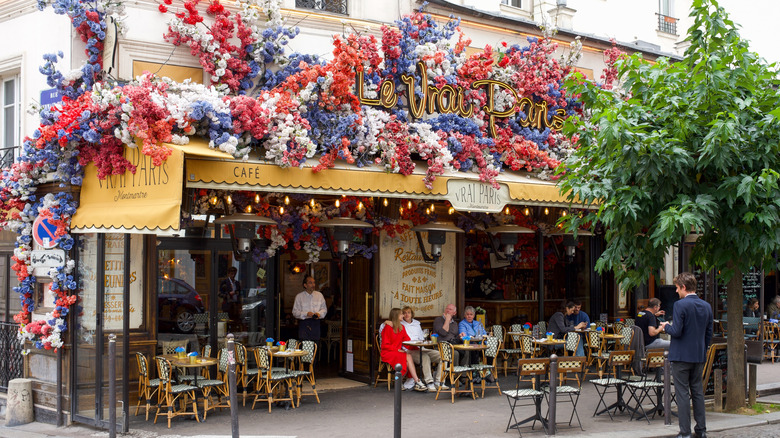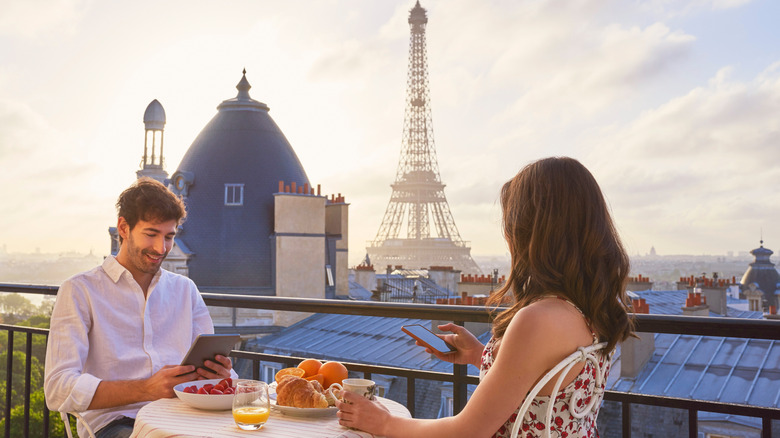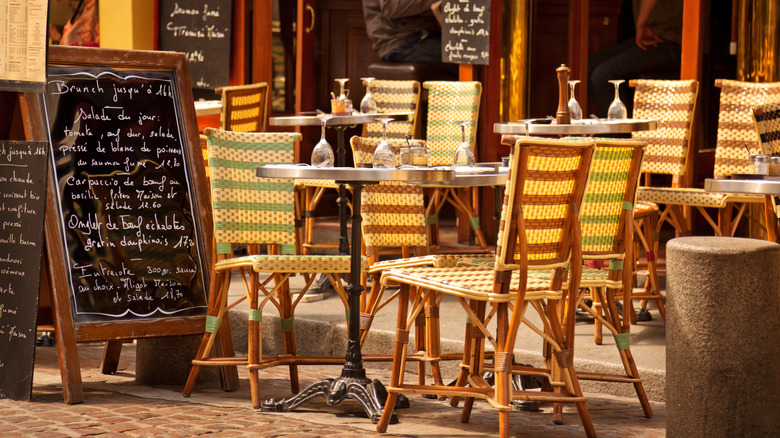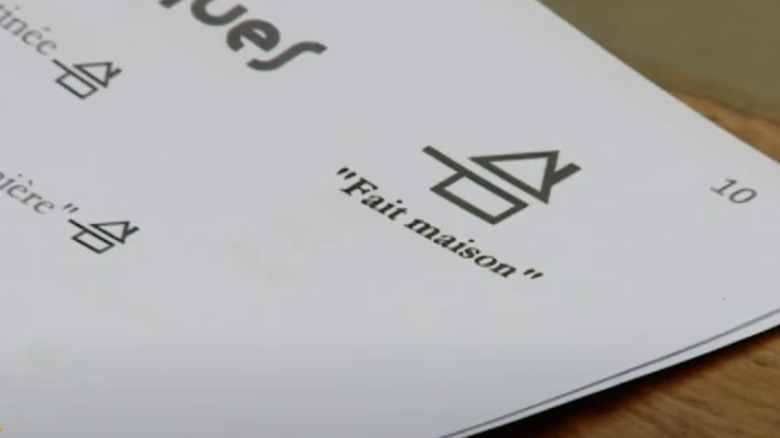Unwritten Rules For Avoiding Tourist Trap Restaurants While In Paris
When you hear the words "French food," you probably assume it's delicious. In fact, the "gastronomic meal of the French" was granted a UNESCO nod in 2010 as part of the list of intangible cultural heritages of the world. If you're visiting Paris, you may expect every meal in a restaurant to be spectacular. Of course, as you would in any tourist city, you'll find that some places serve great food, and others are simply tourist traps designed to part visitors from their money for dishes like reheated frozen meals or food prepared somewhere else. However, there are some tricks you can use to ferret out which places are tourist traps and which ones are likely to live up to the reputation of French cuisine.
The first thing to do is to prepare before you go. Of course, you may end up stopping somewhere for a quick bite if you're tired and hungry while sightseeing, but for itinerary items like a restaurant dinner, it's best to plan in advance. Do some research, look at reviews, and also, talk to friends who have been there before. Word of mouth is a reliable way to find good dining spots. In fact, if you speak French or use the Google Translate app, it's worth asking locals where they like to eat. Ask your taxi driver, the person cleaning your hotel room, someone on the plane who lives in France, or even the guard at the Louvre. People often like to share their favorite dining spots. Just be clear that you don't want to eat what you're used to at home.
Skip restaurants around tourist sites
If you're planning a day of sightseeing, you may want to add in some time to walk to a restaurant that isn't directly across from the tourist attraction you're visiting at lunchtime. The reason is that restaurants near tourist sites can end up charging you a premium "tourist price" while giving you sub-par food because they know their location is desirable. These places count on you wanting a view of, say, the Eiffel Tower while you dine. However, you'll have a much better experience if you walk for a few blocks and find someplace off the beaten path. You can get the famous view when you actually go visit the site.
Of course, if you're walking a lot, you may end up ravenous when mealtime comes around. If you want to push your lunch for a bit while you "ooh" and "ahh," it's a good idea to pack some snacks so you don't get hungry enough to just settle for the closest cafe. In fact, it might be worth visiting an unexpected location: the grocery store. You can grab some food for a picnic or to throw in your bag so you don't need to stop at the first cafe you see after you leave the Musée d'Orsay, for example. It's also worth asking the grocer where they suggest you grab a bite.
Avoid places with long menus and hawkers outside
One red flag of a touristy restaurant is a menu written in English or in several languages — if they cater to non-French speakers, you likely won't get authentic French food. Look, if you're traveling with a picky kid who eats nothing but chicken nuggets or you have a non-adventurous stomach, it's fine to dine at those places — but if not, pass them by.
The same goes for an establishment sporting a very long menu. If they have that much food on hand, they're probably bringing it in from outside, already prepared. Instead, look for a small, seasonal menu with food that stays loyal to local cuisine from the region. It may be written on a chalkboard outside the establishment, as it will change frequently.
Another sure-fire sign you're at a tourist trap is if someone is outside, calling on people to come in and eat. If the food is good, they won't have to solicit. You'll also know a tourist restaurant is not worth the hype if it's open all day. Generally, French restaurants close for a bit between breakfast (usually ending around 11 a.m.) and lunch (traditionally served between noon and 2 p.m.) or between lunch and dinner (typically between 7 p.m. and midnight).
Look for the 'fait maison' or homemade icon on the menu
Finally, there is a symbol on some menus in France that may indicate that you're about to enjoy a great meal. A voluntary label was introduced in 2014 that indicates that items on the menu are homemade. It's a small black icon of a pan with a handle on it and a roof over top — it looks like a pan-house (pictured above).
It's called the "fait maison," and it's supposed to signify that a dish is homemade. If you see this label on a restaurant menu, it means they don't use modified ingredients and that the food is made on-site. (There are fines and even jail time if you use the label fraudulently.)
There are a few exceptions, however, like allowing the potatoes for fries ("pomme frites" in French) to be cut off-site. While it hasn't always been enforced perfectly, it's a pretty good indicator that you're not getting a dish that was frozen and reheated to order. It's worth taking a bit of extra time to find the right place to eat while dining on your Parisian vacation. After all, it's part of the whole travel experience.



